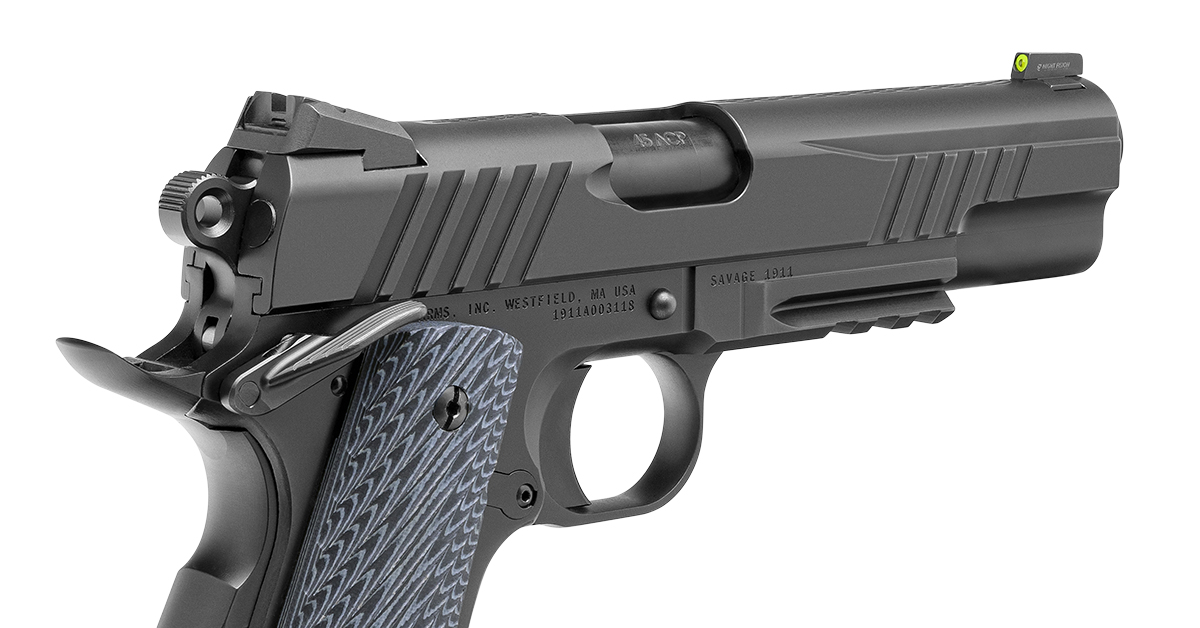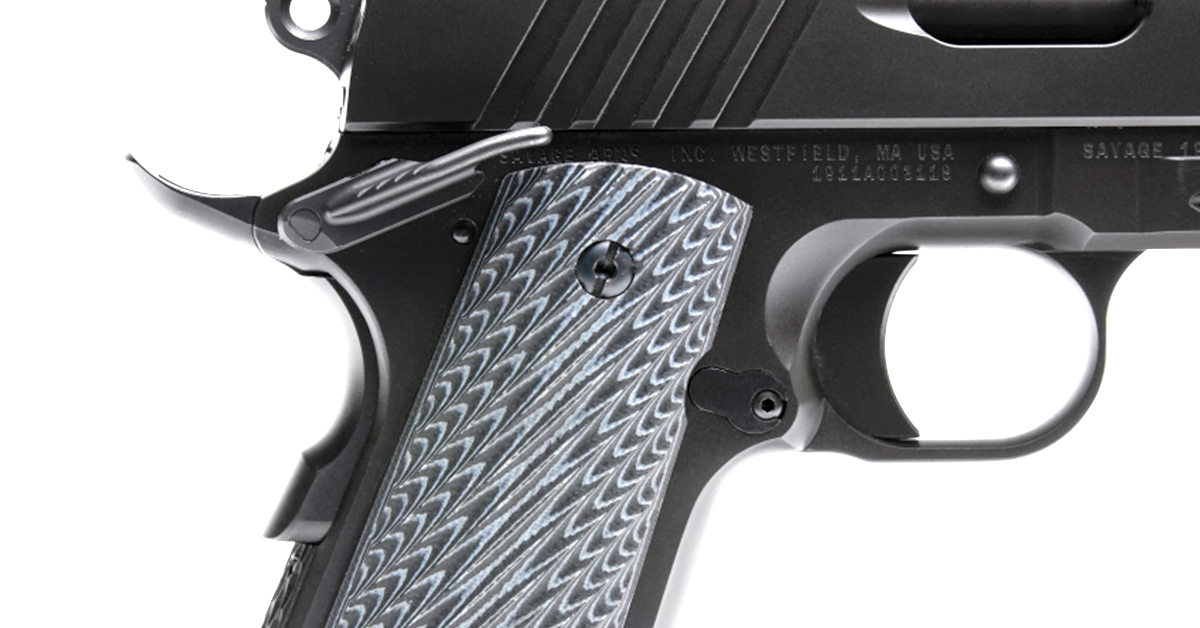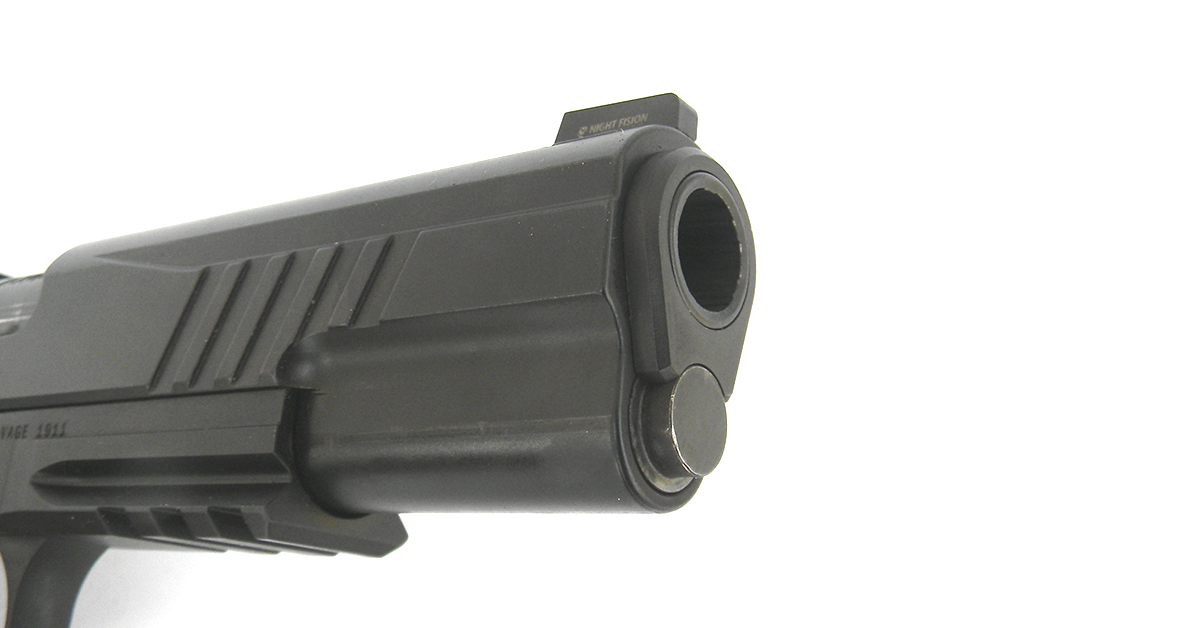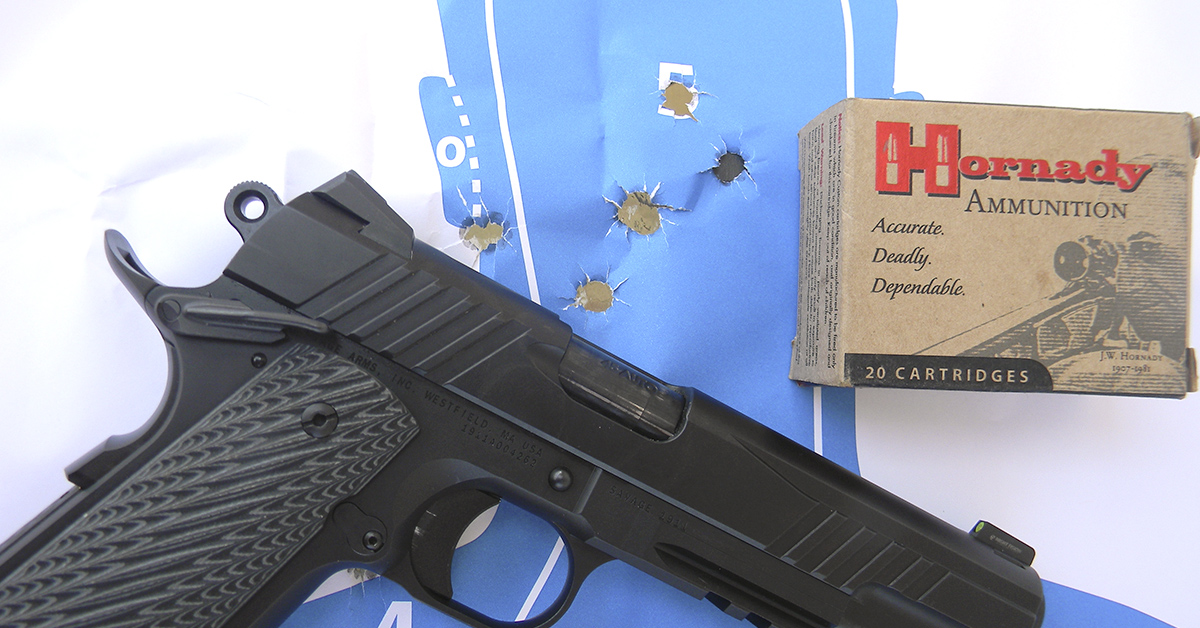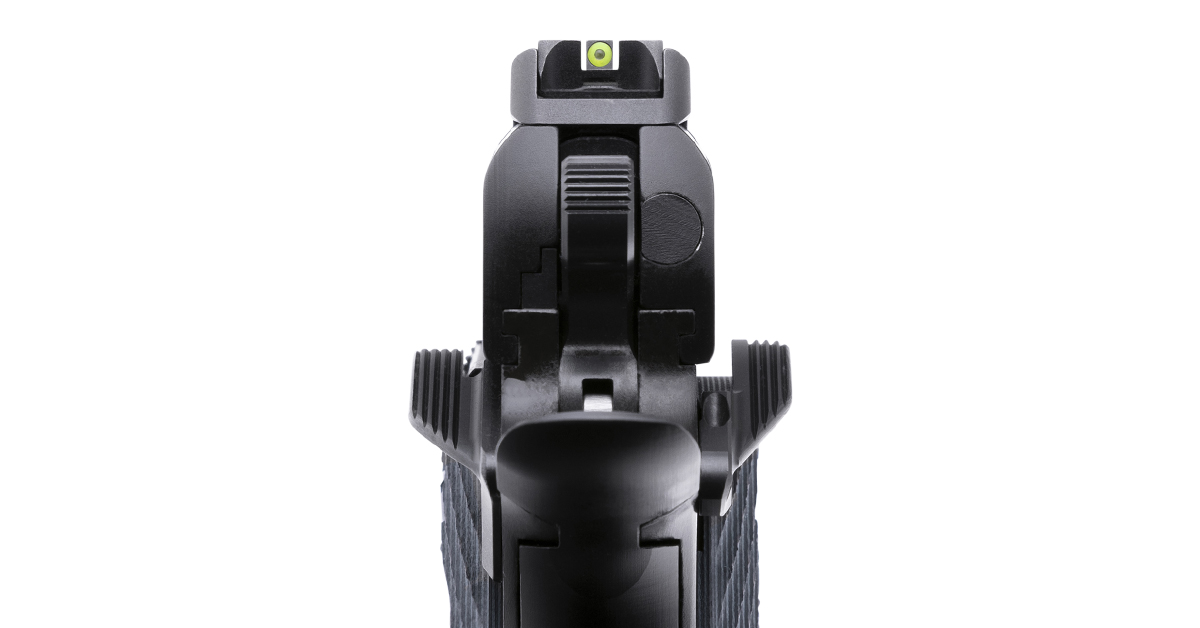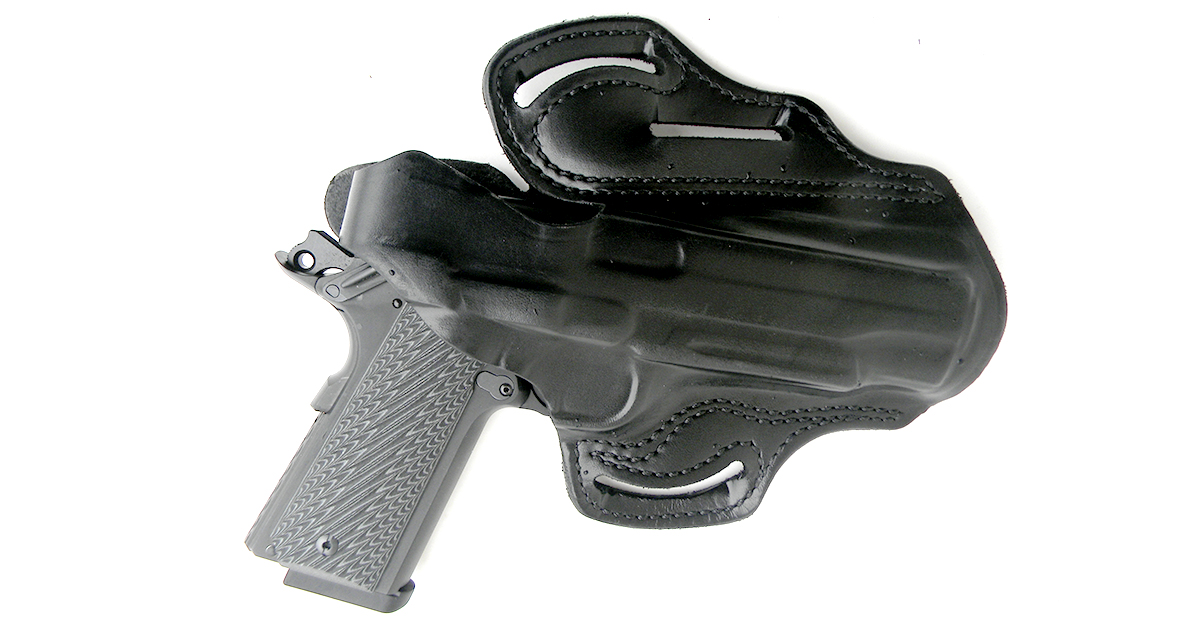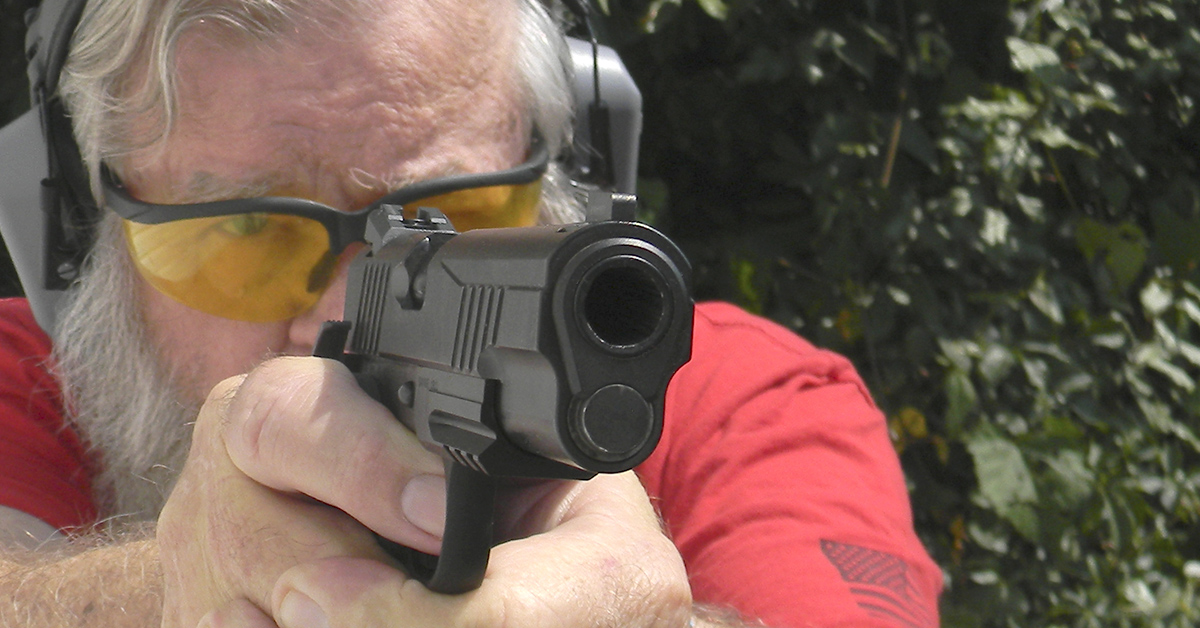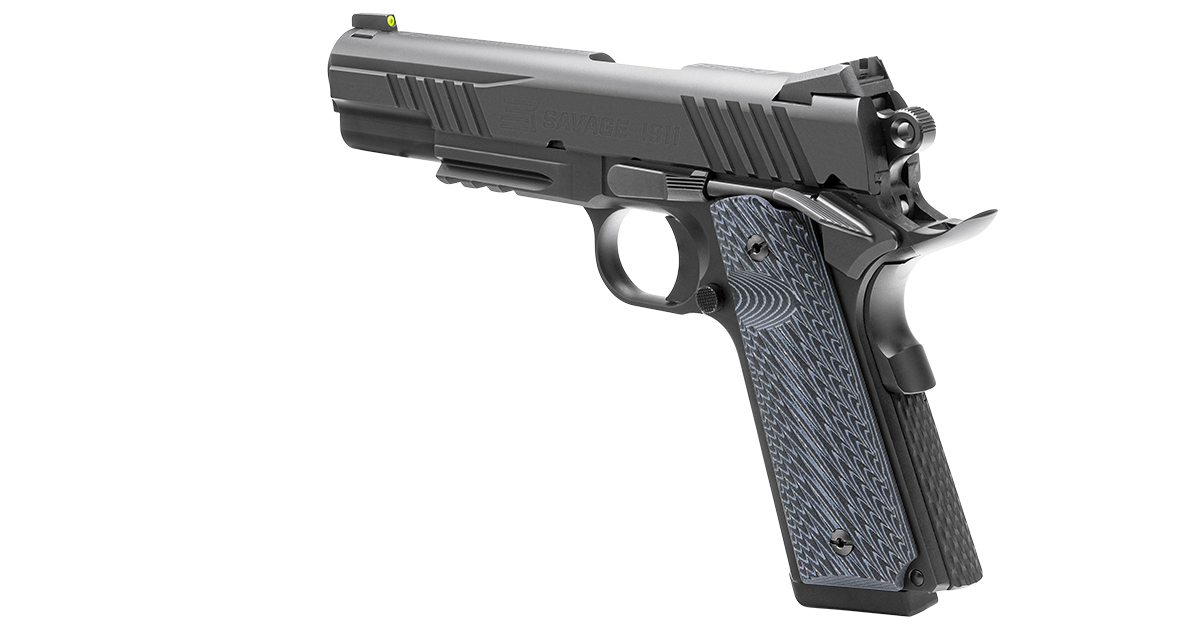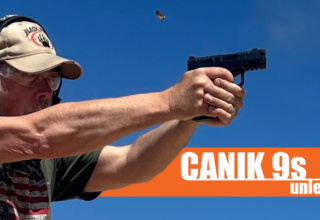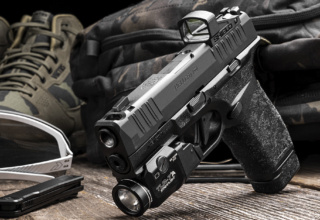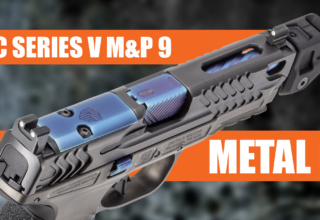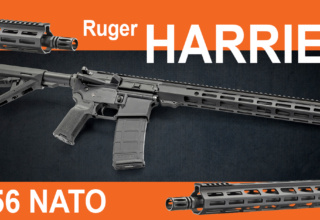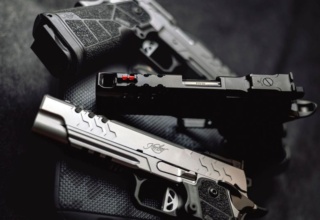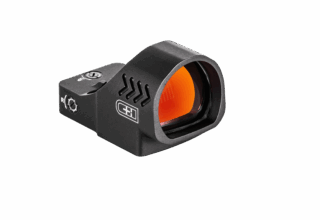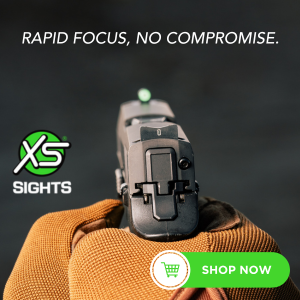A solidly made and confident performer, Savage’s recently introduced 1911 hits the mark…with one minor exception
by Bob Campbell
I want to begin this with a little personal history and why the 1911 handgun is such an important part of my life.
I knew what a 1911 was before I had ever fired a gun. My elementary school library was scarcely as large as my present study, but it was filled with good books and information. I often took 4-5 books home and read every page over the weekend. While I did not neglect my studies, I did read with great interest children’s books by CB Colby. His books on six-guns, the FBI, and military gear were written at my level and very interesting. Colby wrote about one hundred children’s books. I eventually discovered Guns & Ammo and Guns at the local drugstore’s magazine counter. I never gave up comics completely but did learn a great deal about guns. Could I help it if both the Phantom and the Shadow carried a brace of .45 semi-automatics? Then there was the cult hero Mr. Monster. And Mike Hammer. James Fenimore Cooper was a favorite along with Jack London, but so was Jeff Cooper and George C. Nonte.
The 1911 pistol was my favorite subject. I grew up in a family of revolver men and I never fired a self-loading pistol until well into my teens. My grandfather had a pock mark in the wall of his country store where someone had slipped while unloading one of those “dadburn automatics!” Many of my great uncles and my grandfather’s friends were of the greatest generation. No BS and no boasting among these men. Questions were answered matter-of-factly.
Information was free and accurate. A local peace officer of fine character stopped in and gave me details of local shootings as accurately as if I were a medical examiner. These men were of the opinion that the Germans were poor rifle shots. But they were good machinegun shots. Their pistols were not as reliable and hard hitting as the Colt Government .45, although the Luger and P 38 seemed well made. A gun crank in the family never saw a Luger go a full magazine without a jam and never saw a 1911 tie up. I continued to press for answers in my own research.
I eventually owned a 1911 .45 and continued to own many more over the years. I upgraded from old Colts to the Series 70 and then the Series 80 as each improvement in feed reliability and sights was ushered in. I had fired my grandfather’s .32 and .38 revolvers, Dad’s .22 Magnum and .38, and Poppa’s .38. The first shot with the 1911 .45 was anti-climactic. I closed my eyes and thrust toward a log in a ravine. It did not kick nearly as much as the legend. While my life is well rounded and I have no obsessions, I have owned quite a few 1911 handguns and still find them interesting. I have owned more good guns than bad but some of the cheap 1911s have been very bad indeed. I have written three books on the 1911. It takes a very interesting piece to get my attention. I am never happier than when firing a good 1911 and I despise a cheap one.
The Savage 1911
This background gave me good qualifications to review and evaluate the Savage 1911 pistol. Savage didn’t go cheap on this gun. They could have cobbled together a gun from a cast slide and frame and used GI internals. They could have rebranded an import. They went with forged steel and, as far as I am able to determine, no MIM internal parts. The pistol has an MSRP of around $1499. My test pistol is the Nitride-coated (Black) version with night sights.
Let’s look the piece over.
This is a Government Model 1911A1. All 1911 handguns are 1911A1. We simply call them 1911s. This means it has a five-inch barrel and full-length slide and frame. This grip, long sight radius, and weight make the Government Model the easiest 1911 to fire and handle. The slide is nicely scalloped, with beveled surfaces giving the pistol a unique appearance. This artwork in steel does not preclude the pistol fitting in standard 1911 holsters.
There is a tooled section running between the sights that is quite attractive. The sights are Novak low-mount with tritium inserts. The front sight is a mega dot with a neat tritium insert surrounded in bright green. The rear sight features a tritium bar. This is a bar-dot arrangement — one I like very much. The rear sight is adjustable by turning a screw for elevation. Windage requires the loosening of a set screw and bumping with a brass hammer.
The hammer is a rowel type. The slide lock safety is ambidextrous. This safety indents in a positive manner, as it should. The grip safety is a beavertail type with a memory groove. The frame is a rail type, accepting combat lights or lasers. Be certain to order your holster for a rail gun!
The trigger is a solid unit not a target style trigger. I like this for a personal defense handgun.
The grips are G10. The feel is good without too much abrasion but just the right amount of adhesion. The barrel bushing isn’t tight enough to require a barrel bushing wrench after a little break in. It is snug and this meant good accuracy in this case. The pistol features a spring-within-a-spring type recoil spring and standard recoil guide. I have not seen this type of spring applied to a Government Model 1911 before. Two eight-round magazines are supplied. The magazines locked in tight…seemed a little too tight.
Next, the firing test.
The pistol was properly lubricated before firing. This means the barrel around the barrel bushing and barrel hood were well oiled. The cocking block and slide rails also received attention.
Initial firing was conducted with 230-grain full metal jacketed hardball ammunition. One of the magazines was difficult to load to capacity. I initially wrote it off to new magazine break-in, although modern production mags are seldom difficult to load. I found the pistol seems to kick less than most steel-frame .45s.
During the test fire, the pistol exhibited several failures to go into battery and/or feed, commonly referred to as short cycles. I switched to well used, proven magazines and good function began. I have so far used MecGar, McCormick, Springfield, Kimber, Colt, Wilson Combat, and D&L Sports magazines without a single malfunction. I have a box of about forty magazines I use with my 1911 handguns, and they are a diverse lot.
The initial problem wasn’t a break-in malfunction. Switching back to the factory magazine, one continued to fail to feed properly. In the 1911 handgun, the trigger bar runs from the trigger toward the rear of the pistol. Each magazine supplied with the pistol showed sign of rubbing on the trigger bar. This just doesn’t happen with a quality 1911. I would hazard to guess Savage did their T&E with one brand and then took in the low bid on magazines. MecGar isn’t that expensive — and even Rock Island Armory uses MecGar. I have a box of reliable 1911 magazines and a half dozen Wilson Combat magazines in their original packaging, but every buyer will not.
The pistol ran flawlessly through every type of ammunition in the ammo larder once I changed magazines.
I especially like the Novak sights. These sights offer an excellent sight picture for rapid combat shooting. Put the front dot on the target press the trigger smoothly straight to the rear and you have a hit. The beauty of a 1911! Fire, control recoil, allow the trigger to reset as you align the sights, and you have another hit. Trigger reset is sharp.
This is a capable handgun that offers real efficiency in combat drills. The most important part of the evaluation was combat drills at 7, 10, and 15 yards. I also fired offhand in controlled fire at one round per second at 25 yards. Sight regulation is good, and the Savage 1911 turned in good results.
I moved to absolute accuracy testing. In this case, I settled down at the 25-yard line with a good supply of quality .45 ACP ammunition. I used standard defense loads such as the Speer 230-grain Gold Dot, SIG Sauer Elite 230-grain V Crown, Black Hills Ammunition 230-grain FMJ, Remington 185-grain Golden Saber, Hornady 200-grain XTP, and Fiocchi 200-grain Extrema. All loads gave good results. Most five shot groups were in the 2- to 2.5-inch range. This type of shooting takes the greatest concentration and attention to detail. The 230-grain loads were on the dot with the six o’clock hold while 200-grain loads were on the point of aim. I didn’t adjust the sight, although I appreciate the option. It simply wasn’t needed. The single smallest group was 1.8 inches. Most were larger.
I like this pistol and would be hard pressed to recall a 1911 I liked as much out of the box. Then I hit the see-saw with poor magazines! It is back at the top again, but this wasn’t a welcome discovery.
I ordered a DeSantis Speed Scabbard for this pistol. You don’t wish to use a thin, cheaply made holster with a heavy 1911. The Speed Scabbard is well designed and expertly executed. The holster features three belt loops. This allows the shooter to use an almost neutral rake of a rear rake carry. A high point of the design is a reinforced thumb break (you may order a holster without the thumb break.) The thumb goes naturally to the thumb break. A poorly designed security strap may collapse against the body and make drawing the pistol difficult. The DeSantis holster features a reinforced thumb break design. It will not collapse and makes for a high level of retention while not impeding the draw. Stitch tanning and finish is first class.
What I Like
- Some of the things I like are standard fare for the 1911 — simply well done in this pistol. A straight-to-the-rear trigger compression. A well-fitted slide lock safety and excellent speed to an accurate first shot. Style, maybe even bling, is there and I like that a lot.
What I Don’t Like
- The magazines brought forth harsh invectives during the test. I would scrap this contractor and try again. After all, with some one hundred eighteen years in production (beginning with Colt Model 1905) under the belt, we should know how to manufacture .45 ACP magazines that function properly.
- Some shooters will prefer a slick dust cover without a rail. I do, too. But I simply grabbed the first Savage 1911 available.
What I Would Change
- With self-luminous iron sights, an ambidextrous safety, crisp trigger action, and unique appearance, there is little I would change. A ramped barrel? Not really needed. The barrel bushing is a good balance between snug and tight. I would change out the magazines — and I did.
Compare To
- The Savage is comparable to something like the Colt Government Model in most ways as well as the Dan Wesson Valor. I think the closest match is a Desert Eagle 1911. The Savage is worth the money, but for a little more money you get front strap checkering.
Savage 1911 Govt. Specifications
- Action: semi-auto
- Caliber: .45 ACP
- Capacity: 8+1
- Ejection Port: right
- Pistol Size: government
- Barrel Color: black
- Barrel Finish: nitride
- Barrel Length: 5 in.
- Barrel Material: stainless steel
- Magazine Quantity: 2
- Magazine Style: single-stack
- Overall Length: 8.45 in.
- Receiver Color: black
- Receiver Finish: Nitride
- Receiver Material: stainless steel
- Slide Material: stainless steel
- Slide Finish: black Nitride
- External Safety: grip and thumb
- Grip Material: G10
- Grip Color: black/gray
- Trigger Action: single
- Firing Mechanism: hammer
- Front Sights: Novak Tritium Mega Dot
- Rear Sight: Novak, Tritium Bar
- Weight: 2.5 lbs.
- MSRP: $1,499


